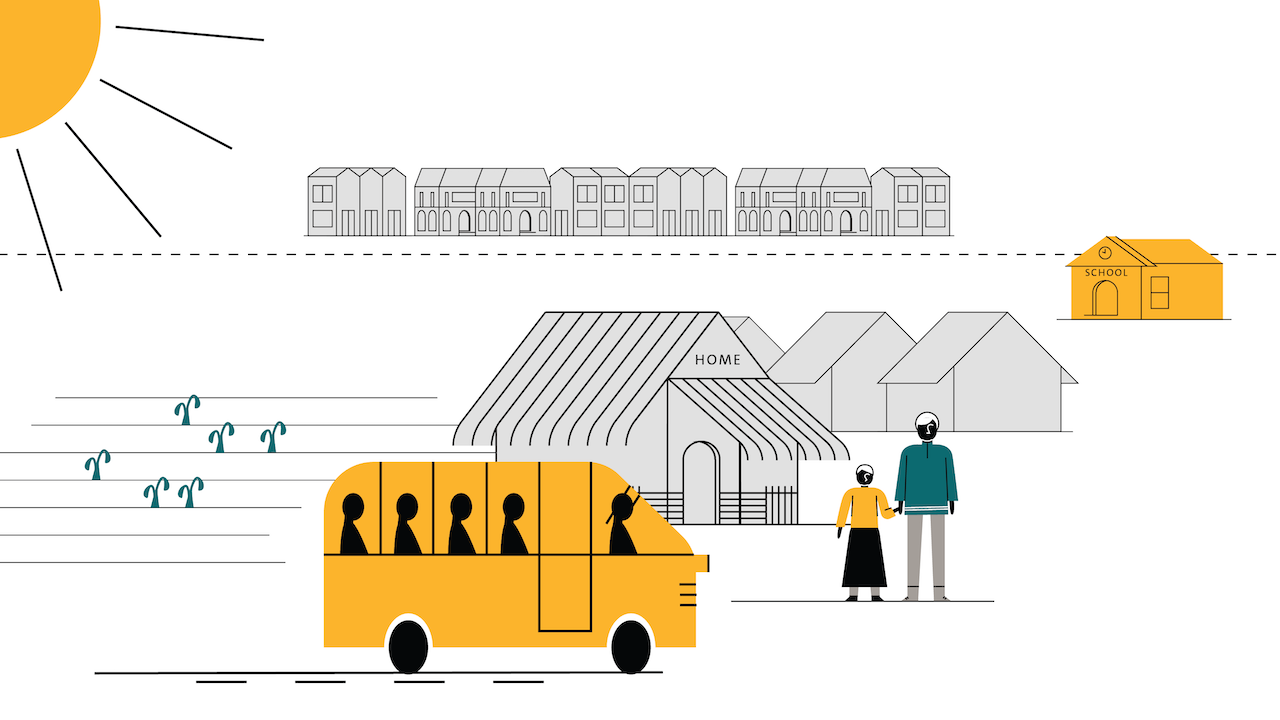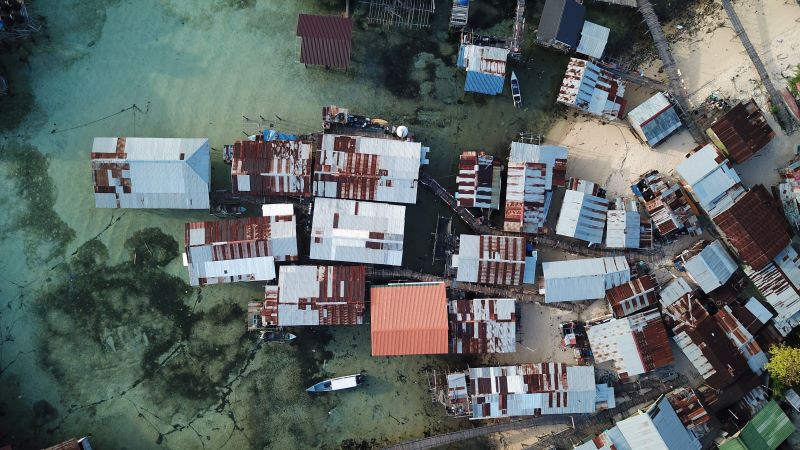Recommended
We know that climate change will alter migration patterns and increase movement in some places. But despite hundreds, if not thousands, of studies, we still don’t know who will move because of climate change, or precisely how or where. Part of that is a conceptual problem: what exactly is a ‘climate migrant’? This blog explores the challenges involved in creating a definition, and suggests some alternatives. In a companion blog, we explore what satellite data can (and can't) tell us about climate-affected migration.
Who wants a definition, anyway?
In the academic literature, efforts to define a ‘climate migrant’ were abandoned some time ago. Several leading researchers argued in a 2019 article that “categorizing climate migrants as distinguishable from ‘non-climate migrants’ is not empirically possible in most, if not all, circumstances. As a consequence, predictions of mass climate-induced migration are inherently flawed.”
That consensus has started to filter through to popular media (see, for example, these articles in The Economist and The Guardian). Still, articles mentioning ‘climate migrants’ or ‘climate refugees’ continue to abound. For both politicians and the media, it’s convenient to have a label—even if that label isn’t very helpful. (One study of media representations found that ‘climate refugees’ are framed as victims, threats, activists, or abstractions, with all lacking agency.)
But giving ‘climate migrants’ a particular status raises questions. How do we tell a climate migrant from an economic migrant? Should a climate refugee have particular rights? If so, how should we assess claims to those rights?
The biggest challenge lies in disentangling climate factors from everything else; but the problems don’t stop there.
Picture Joseph the farmer
Consider Joseph the farmer and his family. He could spend most of his money on irrigation, but instead chooses to send his daughter to school. When a drought decimates his crops, he decides to move to a city just across the border to generate income for his family and keep his daughter in school.
Is Joseph moving because of climate change, because of socioeconomic factors, or both? Could he have stayed where he was? How can we discern his motivation? And what will the country receiving him think of the matter?
Figure 1. Joseph the farmer

Without the drought Joseph could have stayed in his village, and if he had allocated his resources differently, he may have coped better with the drought. Even accepting that he moved because of the climate, did he move because of climate change or because of a single ‘regular’ climate event?
This question is important. Under the Loss and Damage framework of the UN Framework Convention on Climate Change, Joseph (or his country) would only be entitled to some assistance if he suffered damage due to climate change. For damages caused by ‘regular’ climate events, for which there is no liability, assistance would be less likely.
As we set out below, there are four major problems with any effort to define a ‘climate migrant’:
- Differentiating between climate and other factors;
- Establishing whether a given migrant matches a definition;
- Persuading countries to accept a definition and consequences; and
- Persuading a potential ‘climate migrant’ to accept this status.
Climate’s interactions with other variables
Joseph’s success as a farmer depends on the weather, adequate security, irrigation systems, and access to inputs such as fertilizer and labor. Once he has produced crops, he relies on an adequate local or wider market; an economic downturn can result in ruin.
Many people match Joseph’s characteristics. There are an estimated 475 million smallholder farms globally, and they are expected to be placed under increasing pressure by climate change. One estimate suggests that global crop yields may fall by 30 percent by 2050.
Some farmers will leave agriculture and relocate. But attributing any individual decision to climate is hard. In interviews with migrants from coastal fishing communities in Ghana who left after livelihood and habitat loss, for example, very few suggested that climate effects were a major motivator, despite their role in reducing fish stocks.
Other people in climate-affected areas may move due to inadequate access to land, a lack of work in their place of origin, or a lack of irrigation, all of which correlate with climate effects. Hotter temperatures and less rain depress yields, increasing the amount of land needed to support a family; a lack of work may result from a slower rural economy hit by reduced crop yields; and poor irrigation systems may be exacerbated by reduced rainfall. Equally, these reasons may be due respectively to demographic shifts; economic policy misjudgments; and a lack of political will to support irrigation programs.
Government capacity to react to hazards also determines effects. Higher-income countries have the money and tools to build resilient infrastructure, support adaptation, and relocate people before disaster occurs. The US Government Accountability Office has already proposed an assisted relocation program. Lower-income countries have fewer options. In India, states may allow a disaster to worsen before declaring it in order to access federal funding. Any migration from that context is therefore not easily attributed to one reason.
The operational issue
If a definition of a ‘climate migrant’ was established, there would then be the challenge of working out who meets it.
For example, suppose ‘climate migrants’ are defined as people coming from relatively poor areas that have been subject to severe climate shocks such as prolonged drought. Border officials would then be required to assess whether someone meets this definition, a potentially challenging task for countries with relatively low border capacity.
There is also the problem of the ‘difficulty threshold’: did someone have acceptable alternatives to migration? Joseph could, for example, have taken his daughter out of school or moved internally. Answers will be highly subjective, but important. In a study of refugee status decisions in Sweden and Austria, the vast majority of applications involving climate shocks were denied on the grounds that applicants had acceptable alternatives.
Political feasibility
Countries would also have to be persuaded to accept the definition and, if it is to have any use, accept that ‘climate migrants’ should enjoy particular rights. With refugee resettlement and asylum under attack in many countries, this is unlikely at the international level. Refugee advocates also worry that providing rights to a new category of protected person could dilute those provided by the 1951 Refugee Convention. Instead, informal and regional arrangements such as free movement protocols are more likely to be able to support ‘climate migrants’.
Migrants’ acceptance
Finally, even with an accepted definition, those affected by climate change may be reluctant to claim ‘climate migrant’ status. New Zealand, for example, trialed an ‘experimental humanitarian visa’ in 2017, but abandoned it six months later after realizing that Pacific Islanders did not want it. Resistance to moving continues to grow: Kiribati, for example, had a ‘migration with dignity’ policy, but recently abandoned it for an approach focused on economic prosperity, adaptation, and mitigation. However, this reluctance to accept a label often perceived as demeaning might change as climatic conditions degrade further.
Where do we go from here?
It will be an uphill battle to agree on definition of a ‘climate migrant’ or ‘climate refugee’, and it may not be worth it. Alternatives should instead focus on opening existing labor pathways to more people and building resilience in-situ. On the former, regional free movement protocols are highly promising, and encouraging moves are being made in this area in East Africa and the Pacific.
On the latter, migration should always be a choice; an acceptable alternative to movement should be supported wherever possible. Where solely in-situ adaptation is not possible, most movement will occur internally. Countries should reconsider policies that seek to prevent internal migration, and cities should be supported in preparing for a gradual increased influx of rural inhabitants.
The Center for Global Development is currently undertaking a project analyzing climate-affected migration trends and proposing policy-relevant advice. More information about this project can be found here.
Disclaimer
CGD blog posts reflect the views of the authors, drawing on prior research and experience in their areas of expertise. CGD is a nonpartisan, independent organization and does not take institutional positions.








